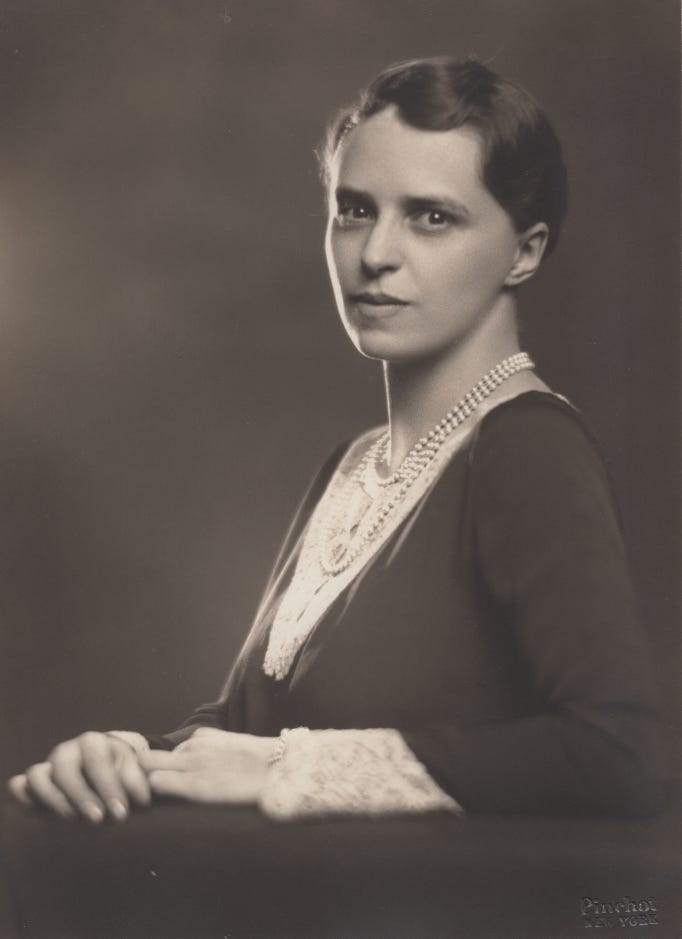The Unconventional Leadership of Mary K. Grant: A Trailblazer in Ceramic Design
In the mid-20th century, when the ceramics industry was overwhelmingly dominated by men, Mary K. Grant emerged as a visionary leader. Although she was formally known as the "Chief Stylist" or "Lead Designer" rather than an "Art Director," her role and influence were nothing short of groundbreaking. In this post, I’d like to explore just how unusual—and extraordinary—it was for Mary K. Grant to occupy such a central creative role in an era when women were rarely given a seat at the executive design table.
About Mary K. Grant
Mary K. Grant (April 21, 1902 – April 8, 1975) was a pioneering figure in American ceramic design. Born Ethel May Kubishta in New York City—where she was also known professionally as Mary Kay—she began her career in a time when women’s roles in design were largely confined to decorative tasks. Over the years, she built her reputation as a discerning critic and celebrated stylist, contributing reviews to industry publications and working with major companies like R. H. Macy.
By the mid-1930s, her exceptional talent and vision led to her appointment as Chief Stylist and Lead Designer for Franciscan Ware. From 1936 to 1952, Mary K. Grant steered the creative direction of iconic dinnerware and fine china lines. Her ability to blend artistic innovation with practical design transformed the company’s aesthetic and redefined the role of women in the ceramics industry. Today, her legacy endures as a bold example of creative leadership and a guiding light for future generations.
A Role Beyond a Title
Mary K. Grant’s responsibilities went far beyond what her title might suggest. In today's language, we would easily equate her contributions to those of an Art Director. She was deeply involved in every step of the creative process: from evaluating design submissions to adapting ideas for mass production, and from refining aesthetic details to making the final call on which patterns would grace the dinnerware and fine china lines.
Her role involved:
Creative Oversight: Grant was the final arbiter of the design language, ensuring that every piece met the high standards of aesthetic quality and market appeal.
Strategic Decision-Making: She was involved in shaping not only the visual identity of the products but also the overall design strategy for the company.
Mentorship and Leadership: Despite the era’s gender biases, she mentored emerging designers and guided the creative teams, a responsibility typically associated with an Art Director today.
Breaking Through in a Male-Dominated Landscape
The very idea of a woman holding such comprehensive creative authority was unusual during this period. The prevalent business culture of the time almost always placed men in roles with titles like "Art Director"—positions that signified ultimate responsibility for a company’s creative output. Women, on the other hand, were frequently relegated to roles labeled more as "Decorators" or "Stylists." For Mary K. Grant to be trusted with a position that allowed her not only to contribute creatively but also to steer the design process was revolutionary.
Her appointment signified more than just personal success, it was a signal that exceptional talent could and did transcend the rigid gender roles of the time. Grant’s work helped to reshape the industry’s view about the potential of women as creative leaders and strategic decision-makers.
The Legacy of a Creative Pioneer
Today, history recognizes Mary K. Grant’s role as being on par with that of an Art Director. Her ability to blend creative vision with technical expertise not only spurred the success of her company’s dinnerware lines but also paved the way for future generations of women in design. Grant’s legacy is a reminder that leadership in creative industries isn’t solely defined by titles; it’s measured by impact, innovation, and the courage to break through established norms.
Her work allowed her company to stand out in a competitive market by delivering innovative designs that captured the spirit of the times while setting trends for the future. In retrospect, her title may have been a byproduct of an era constrained by gender expectations, but her influence was nothing short of transformative.
Reflecting on a Bold Future
Mary K. Grant’s extraordinary career challenges us to rethink how we assign titles and recognize leadership. As we celebrate her legacy, we also acknowledge that formal titles sometimes fail to capture the full scope of a leader’s contributions. Grant’s journey serves as both a testament to her personal resilience and an inspiration for anyone pushing boundaries in their field.
As we continue to valorize creative leadership in modern industries, it’s important to remember pioneers like Mary K. Grant—whose work laid the foundation for more inclusive and expansive definitions of artistic authority. Her story isn’t just about breaking a glass ceiling; it’s about changing the entire architecture of creative leadership.
The Next Chapter: Mary Jane Winans Takes Over
When Mary K. Grant left Gladding, McBean in 1952, another talented woman stepped into her shoes—Mary Jane Winans. Winans continued the tradition of female leadership in design at Franciscan Ceramics, serving as Chief Designer and Stylist from 1953 to 1975. Under her leadership, Winans contributed significantly to embossed dinnerware patterns like Desert Rose and Franciscan Ivy while shaping new artistic directions for the brand.
The fact that another woman was appointed to Grant’s former role speaks volumes about the influence she had in paving the way for female leadership in ceramics design. Winans’ tenure further cemented the idea that women were not merely decorators or assistants—they were shaping the industry itself.





